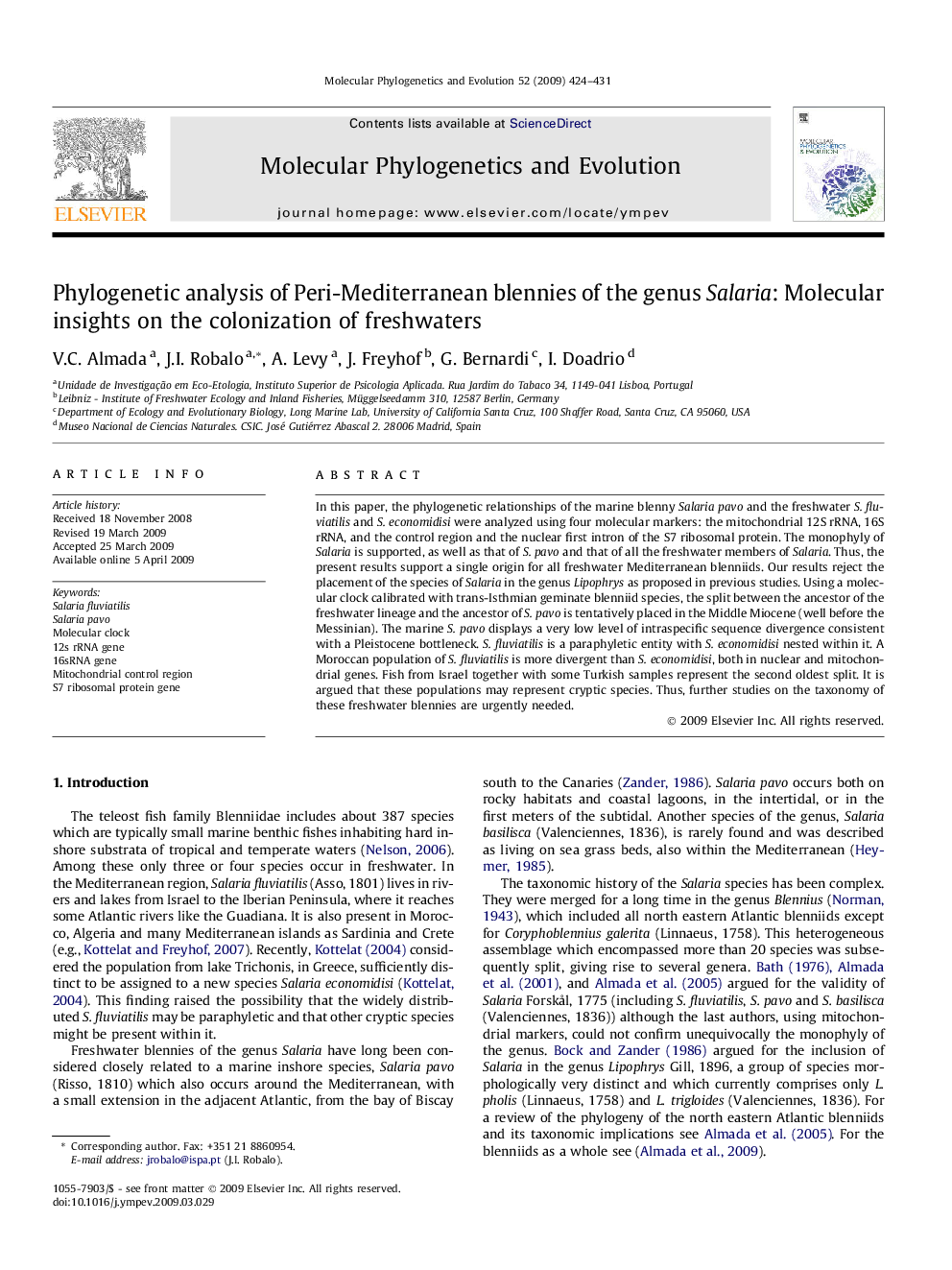| Article ID | Journal | Published Year | Pages | File Type |
|---|---|---|---|---|
| 2834401 | Molecular Phylogenetics and Evolution | 2009 | 8 Pages |
In this paper, the phylogenetic relationships of the marine blenny Salaria pavo and the freshwater S. fluviatilis and S. economidisi were analyzed using four molecular markers: the mitochondrial 12S rRNA, 16S rRNA, and the control region and the nuclear first intron of the S7 ribosomal protein. The monophyly of Salaria is supported, as well as that of S. pavo and that of all the freshwater members of Salaria. Thus, the present results support a single origin for all freshwater Mediterranean blenniids. Our results reject the placement of the species of Salaria in the genus Lipophrys as proposed in previous studies. Using a molecular clock calibrated with trans-Isthmian geminate blenniid species, the split between the ancestor of the freshwater lineage and the ancestor of S. pavo is tentatively placed in the Middle Miocene (well before the Messinian). The marine S. pavo displays a very low level of intraspecific sequence divergence consistent with a Pleistocene bottleneck. S. fluviatilis is a paraphyletic entity with S. economidisi nested within it. A Moroccan population of S. fluviatilis is more divergent than S. economidisi, both in nuclear and mitochondrial genes. Fish from Israel together with some Turkish samples represent the second oldest split. It is argued that these populations may represent cryptic species. Thus, further studies on the taxonomy of these freshwater blennies are urgently needed.
